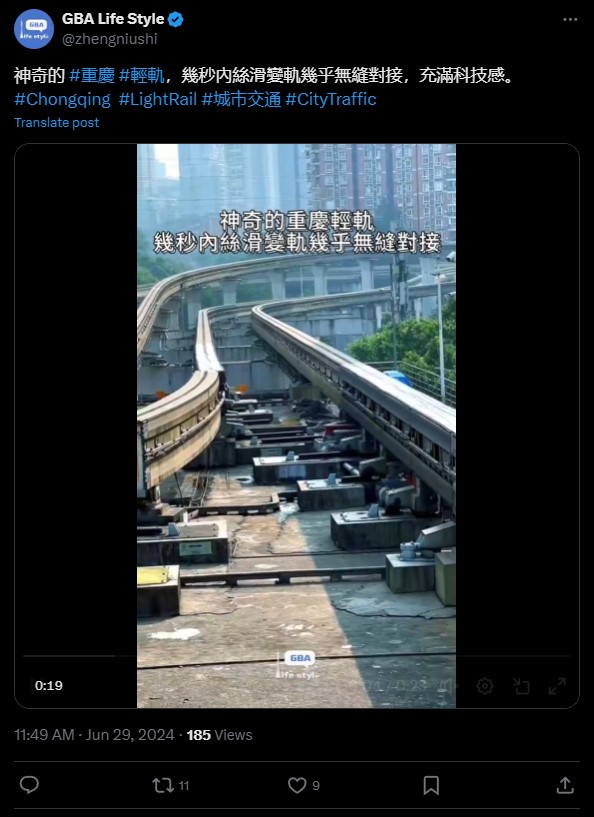A video clip showcasing train tracks switching has garnered significant attention online, with claims that it reveals advanced rail technology from Japan. However, investigations indicate that the footage actually originates from Chongqing, a city in southwestern China. The 22-second compilation, which includes images of trains navigating through various urban landscapes, was mistakenly attributed to Japan in a post shared on the social media platform X on December 4, 2024. The misleading assertion was reiterated in multiple posts across various platforms, including Facebook, Instagram, and Threads, which only fueled the misconception about the origin of the rail technology depicted.
To verify the claims surrounding the video, a reverse image search led to a post made on June 29, 2024, which correctly identified the footage as being from Chongqing. This original post highlighted the achievements of the city in rail infrastructure and was archived to offer further evidence. Additionally, further exploration on TikTok’s Chinese counterpart, Douyin, revealed a similar clip presented by BRTV, a media outlet financed by the Chinese government, titled “the amazing Chongqing light rail,” affirming yet again that the scene in the video was indeed set in Chongqing, Sichuan province.
The authenticity of the footage was confirmed through geolocation techniques applied by AFP, which pinpointed a location in the video at the nine-second mark. This particular verification was achieved by identifying a sign in the background that read “Fuqiang hotel.” Following this lead, further searches disclosed that the tracks featured in the video were near the Tangrui Fuqiang Hotel located in the Jiulongpo district of Chongqing. Comparisons between images of the hotel shared on travel platforms and scenes from the video demonstrated clear matches, thereby eliminating any doubt about the video’s actual location.
Another significant point of geolocation came from an analysis of the building with a distinct wavy roof visible at the 19-second mark of the video. It was linked to Bijin Station, which is situated near Chongqing’s Jiangbei International Airport. The layout of the train tracks as seen in the footage corresponded directly to those adjacent to the airport, further validating the geographic accuracy of the content. Detailed comparisons were made using Google Earth images to corroborate the train track layout, ensuring that the video was indeed not from Japan but rather a clear representation of Chongqing’s urban railway systems.
In addition to these specific locations within Chongqing, various visual elements, overlapping paint schemes, and advertising materials showcased in the video aligned with those recognized in the city’s light rail transport network. These distinguishing features have been documented in travel guides, industry reports, and other video content that aligns with Chongqing’s light rail system. The compelling evidence provided by these sources effectively dispelled the erroneous claims of the footage’s origin, affirming that the light rail technology exhibited was a product of Chinese innovation, not Japanese.
Ultimately, the viral spread of the video serves as a compelling reminder of the importance of verifying information before its dissemination. The reactions to the video encapsulate a broader narrative about how misinformation can cloud public perception, particularly regarding technological advancements in different countries. Recognizing the true origin of the train tracks and their association with Chongqing allows for a better appreciation of the city’s achievements, while also emphasizing the need for accuracy in reporting such developments in an increasingly interconnected world.

